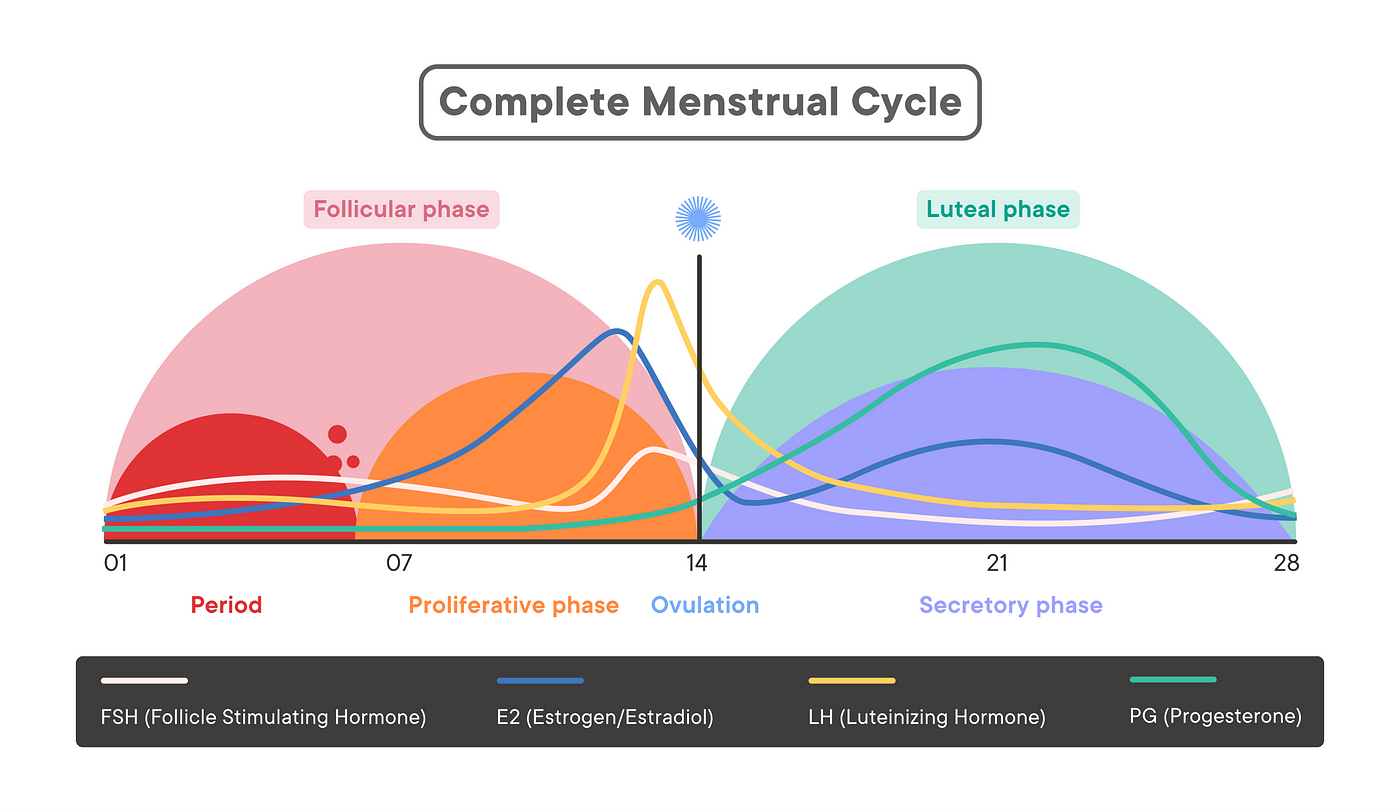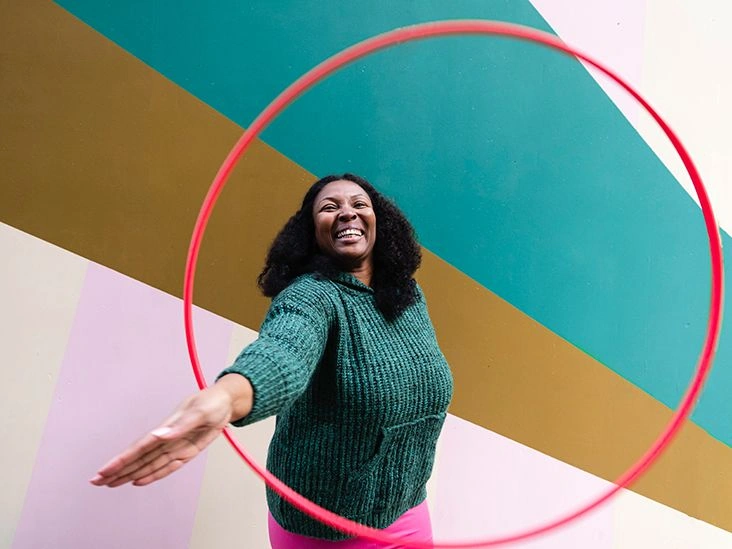Cycle syncing means adjusting your nutrition, workouts, and daily habits to align with the different stages of your menstrual cycle. While rigorous scientific evidence on its advantages is still limited, many people find it a useful way to learn about their cycle and how it influences them.
The phase of your menstrual cycle can influence many aspects of daily life, from hunger and sleep to moods and energy.
Cycle syncing revolves around tailoring your diet and exercise routines to match the cycle’s phases.
Some advocates recommend following fairly fixed nutrition and fitness suggestions for each stage of the menstrual cycle. Yet because menstruation affects individuals differently, there’s no universal prescription that fits everyone.
Still, tracking your cycle can be a practical method for noticing how your body and mind change over time.

Who might benefit from cycle syncing?
For some, the menstrual cycle has minimal impact on everyday functioning; however, that’s not the experience for everyone. Cycle syncing can be particularly useful if you suspect your cycle is influencing your physical or mental wellbeing.
It may also be helpful if you have a health issue that fluctuates with your cycle, such as:
- polycystic ovary syndrome (PCOS)
- endometriosis
- premenstrual syndrome (PMS)
- premenstrual dysphoric disorder (PMDD)
- premenstrual exacerbation (PME)
Getting to know the menstrual phases
The menstrual cycle is commonly divided into four phases:
- menstrual (your period)
- follicular (before egg release)
- ovulation (egg release)
- luteal (after egg release)
Below is a brief overview of typical hormonal shifts across these stages:
PhaseDays (approx.)Hormonal changesMenstruation 1–5Estrogen and progesterone are low. Follicular6–14Estrogen rises, peaking in the late follicular phase.Ovulatory15–17Luteinizing hormone and follicle-stimulating hormone surge to their highest levels. This is called the LH surge.Luteal18–28Progesterone reaches its peak and estrogen increases again, though not to the same level as in the follicular phase.
Remember the timelines above are averages. The precise length of each phase varies by person.
How to begin
Cycle syncing starts with recording how your body and mind feel throughout your cycle.
If you like writing things down, a dedicated journal works well. Alternatively, plenty of apps can help you log symptoms. Choose a method that lets you capture as much detail as possible.
Your menstrual cycle can influence many areas, so track any observations about:
- overall mood
- energy levels
- concentration
- sleep quality
- bowel/bladder patterns
- skin changes
If you have chronic health problems, note how their symptoms shift across the cycle as well.
Learn more about the stages of the menstrual cycle.
Creating an exercise strategy
As hormones change, so can your energy and mood, which in turn may affect how you approach physical activity. Cycle syncing aims to match exercise intensity and type to these variations.
If you notice lower energy in the luteal phase (the week or so before your period), you’re not alone. A study found athletes reported worse perceived performance in the late luteal phase.
The researchers point out that studies on this topic have produced mixed findings. The 2023 review noted similar inconsistencies, partly because methods for determining participants’ cycle phases weren’t standardized.
They also emphasize that historical assumptions about menstrual effects on fitness contributed to a pattern of excluding people who menstruate from exercise research.
That said, inconsistent study results don’t negate the possibility that your cycle affects your energy or performance — they simply indicate a need for more large, well-designed studies.
Meanwhile, experts offer general guidelines for exercising during the various cycle phases.
Menstrual phase
With estrogen and progesterone at lower levels and the uterine lining being shed, it’s common to feel tired. Gentle, low-impact activities like yoga or easy walks may feel more comfortable.
If period pain or fatigue is significant, there’s no obligation to push through. Your flow can influence what types of movement feel right.
Follicular phase
As estrogen and progesterone begin to increase, energy often returns. This can be a favorable time for endurance workouts or resistance training.
Activities like hiking, brisk walking, or weights might feel particularly satisfying during this phase.
Ovulation phase
The LH surge can make you feel more alert and energetic. High-intensity workouts — such as HIIT or spin classes — may be easier to tolerate now.
However, some people experience ovulation-related discomfort, so it’s fine to scale back when needed.
Luteal phase
Energy levels may decline, and recovery from intense sessions can take longer. PMS symptoms like breast tenderness or cramping can make some exercises less comfortable.
The luteal phase can also bring bigger shifts in mood, especially with PMDD or PME. If you feel low, prioritize activities you enjoy to support emotional wellbeing — whether that’s a gentle walk with a friend or restorative yoga.
Adjusting your diet
There’s a lot of guidance online about diet changes across the cycle, but much of it lacks strong scientific backing.
The best nutrition plan for you depends on many factors, including your routine and how your body processes different nutrients.
A practical baseline is focusing on whole foods and reducing excess sugar, caffeine, and alcohol when possible. Staying well hydrated may help lessen menstrual discomfort.
As you monitor symptoms in each phase, try also tracking your food to identify any patterns or triggers.
Noting shifts in libido
It’s normal for sexual desire to change through the menstrual cycle. The pattern differs widely between individuals and may vary from cycle to cycle.
Typically, libido can increase around ovulation — which is also when fertility is highest — so use contraception if you’re not aiming for pregnancy.
As progesterone rises in the luteal phase, sexual interest may drop, and for some, that lower drive continues into menstruation.
Besides listening to your body, talking with partners about preferences and comfort during different phases can be helpful. Which activities feel good at certain times? Is sex during menstruation something everyone is comfortable with?
If you’re unsure how to start the conversation, a guide to discussing sex with partners may useful.
The takeaway
Cycle syncing can offer a structured way to tune into your body and better comprehend your menstrual cycle.
By consistently noting how you feel in each phase, you may spot patterns that clarify what your body needs throughout the month.


















Leave a Reply
You must be logged in to post a comment.